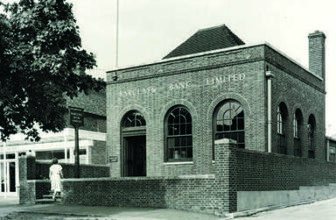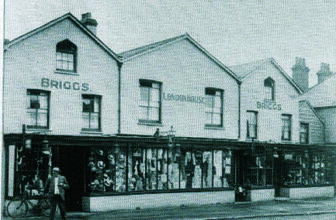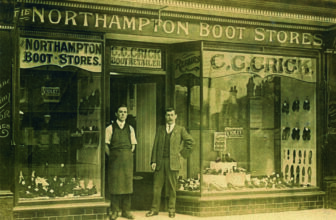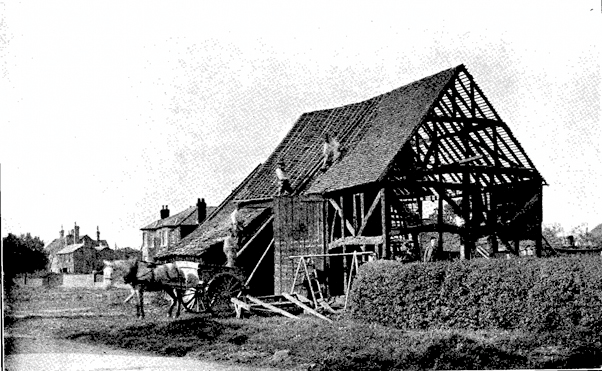
by Joy Horn Main Photo – The Great Barn being dismantled, 1887. Caryll House, then called The Laurels, can be seen on the left.
Cranleigh’s fine Common has so much of historical interest that this walk will confine itself to the north side – and will have to be selective in its comments. It starts at the war memorial, goes along the side of the cricket ground and finishes at Horseshoe Lane (¾ mile, with resting places).
The Common was once much bigger, until buildings encroached on it, legally or illegally. Straddling the Common behind the present war memorial was the Great Barn (sometimes called Birdfield Barn), taken down in 1887 to mark Queen Victoria’s Golden Jubilee, thus opening up the entrance to the village. Soon after, maples (acer schwederii) were planted around the Common.
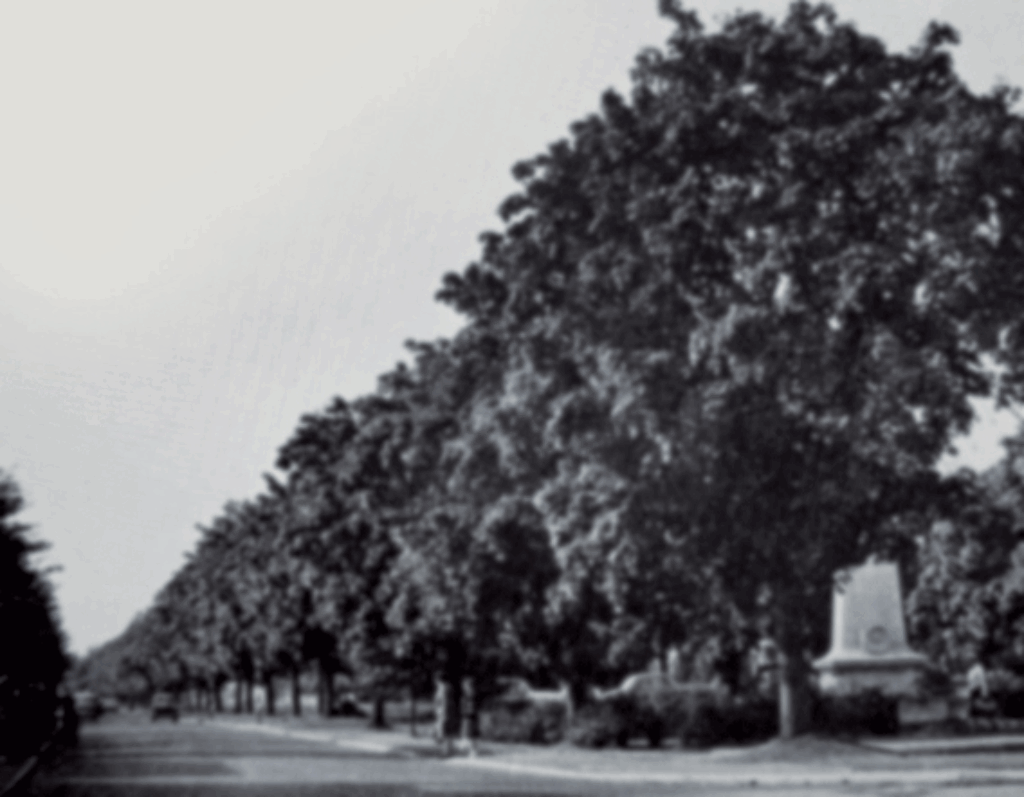
Baltic House was put up by builder Frederick Warren, in conjunction with local architect Thomas Wade, as the Warren family home. Any house in Cranleigh by this partnership is sure to be beautiful and functional. Its name was originally Marlow, but was changed when a financier involved in Baltic trading moved here.
What was once a flourishing Forge is just along on the right, where there is a terrace of three cottages. The blacksmith lived in the largest one, at the left-hand end, and the forge stood where the right-hand cottage has been built, later but matching the others. It was indispensable in the nineteenth century, when horses (with their horseshoes) were vital for transport. The blacksmith also manufactured tools of every kind for farms and domestic use. Railway and motor transport spelt the end for the forge, even though it turned in the twentieth century to car repairs and a taxi service.
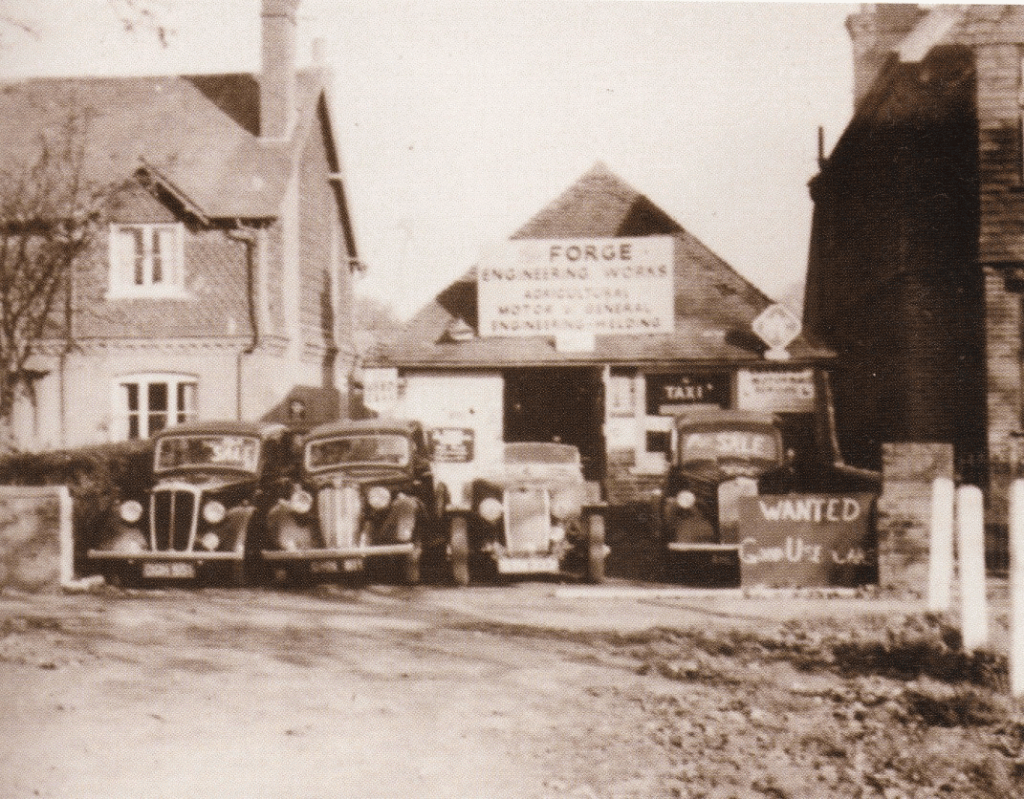
The White House was once the home of Thomas Puttock, Cranleigh’s wheelwright, though it was then without the two side wings. Puttock retired in 1857, aged 40, but it is somewhat surprising to find him living in affluence here. The explanation is that he and his father had cannily invested their profits in property. Not long after this, the railway and the motor car made the wheelwright’s skills redundant, too.
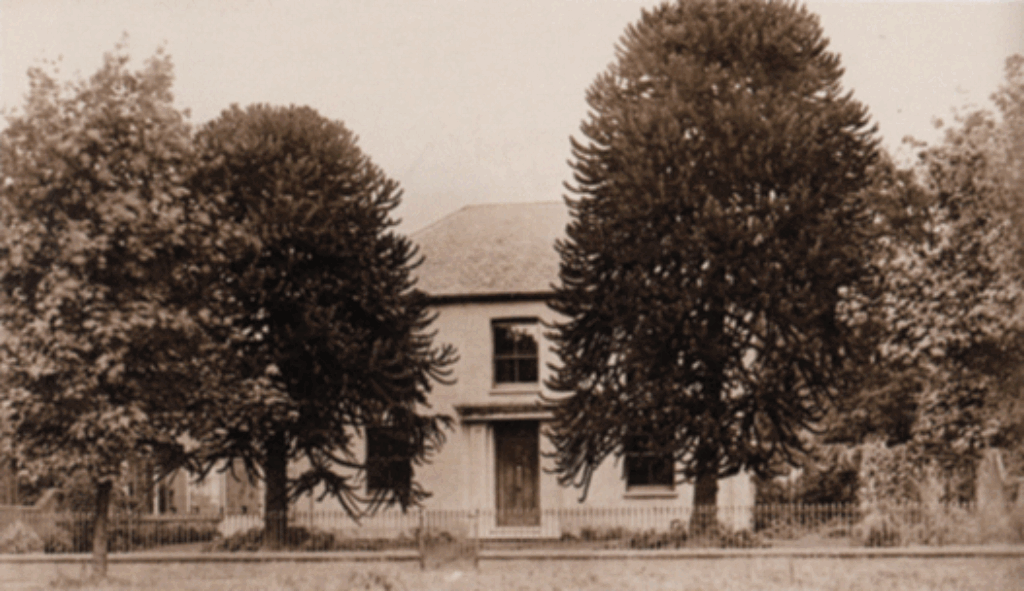
Past the former Stonewall Farm (now Whiteoaks), there are large twentieth-century houses, built on the farm’s fields and facing the cricket ground. Robin Rag takes its name from the field on which it is built – it was called that in 1841, and probably much earlier. Another house, The Covers, takes up the cricketing theme, but until 1997 it was called Dalvey and was the home of Guinevere Tilney. She was wardrobe adviser to Prime Minister Margaret Thatcher and was credited with creating a new, softer, image for her. The next house, Briarfield, was for several years the home of England’s cricket captain, Peter B.H. May, who was married in the parish church in 1959. His wife, Virginia Gilligan, was a distinguished show-jumper, and they had stables for horses behind the house.
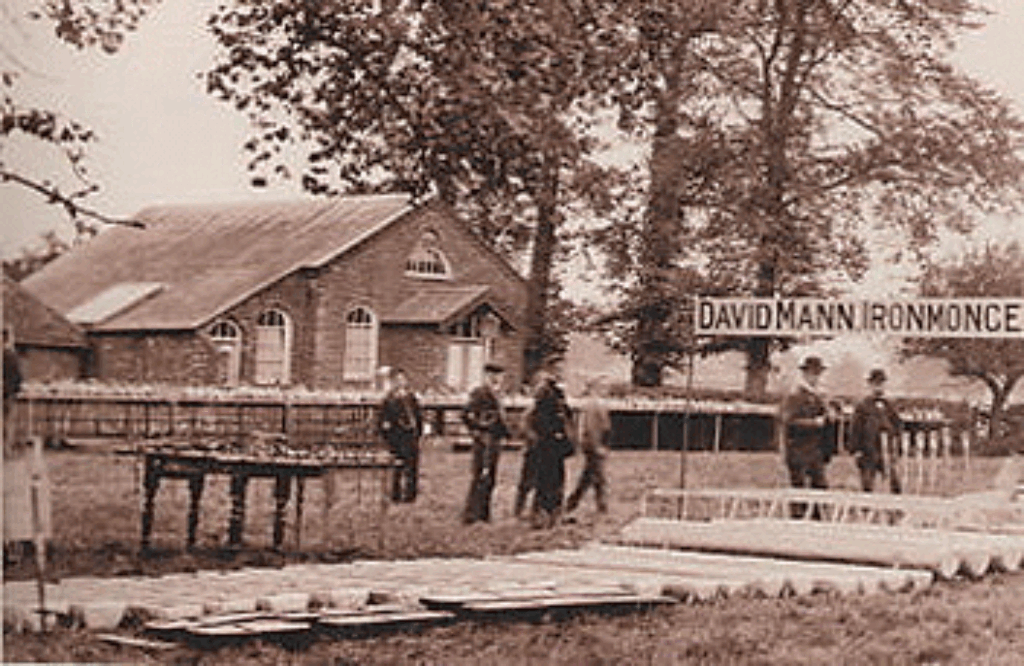
Cricket has been played on the pitch here since at least 1856 when the Cranley Cricket Club was formed. On a Friday evening enthusiastic young people throng the ground for training, while senior matches may be watched on Saturdays and Sundays. Or you may catch a view of the ancient game of stoolball: a women’s team is based here.
Next to Briarfield is The Old Chapel, up an alleyway. When it was built in 1828, it was the first place of worship in Cranleigh for non-conformists (or non-Anglicans). They had previously been meeting in one of the cottages which form Pear Tree Cottage, so in relief at having more space they gave this chapel the biblical name ‘Rehoboth’, which means ‘enlargement’. In 1889, they needed further space once again, and built the Baptist chapel on the Guildford Road. The former chapel then had various uses, such as a furniture store for David Mann & Sons and later a meeting-place for young people’s organizations and the Youth Band, before it became a private house in the 1980s.
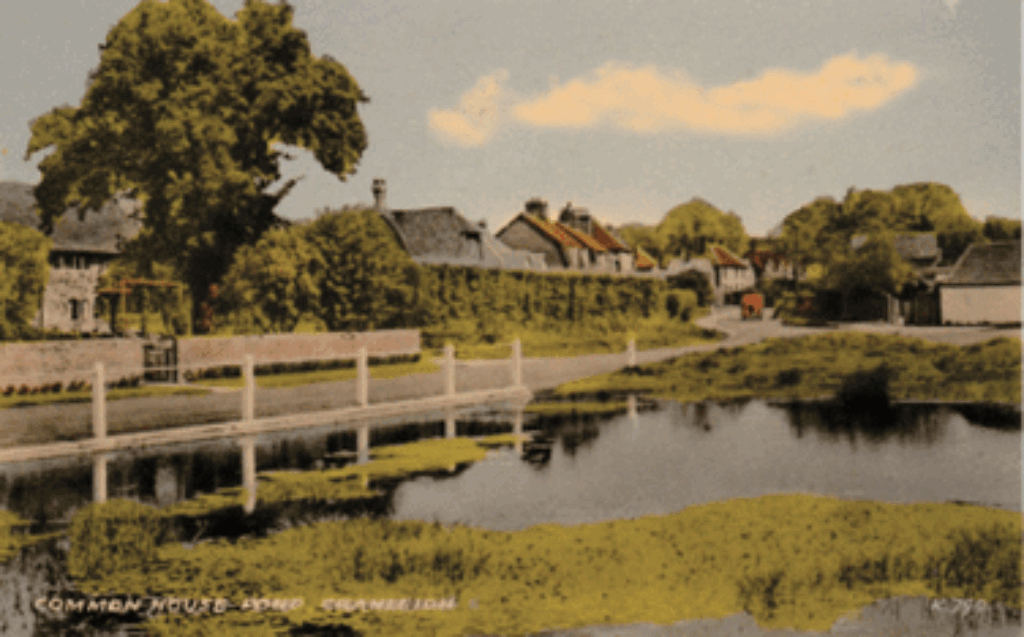
The final stop is to look at the pond near the former Common House Farm. Ponds near all the entrances to the Common were not only to refresh horses, but also so that the wooden wheels of wagons and carts would expand to fit their iron rims. Think Constable’s The Haywain.
The Cranleigh History Society meets on the second Thursday each month at 8pm in the Band Room. The next meeting is on Thursday July 13th, when Gary Miles will speak on ‘The history of Punch and Judy’. Visitors are welcome.



